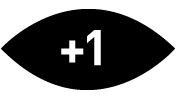

Director Amma Asante’s Belle is veritable catnip for art-house audiences. It’s a British period drama peopled with players we love to see dressed in corsets, frock coats, and powdered wigs. It’s a feel-good film about race with a gorgeous, light-skinned black woman to root for as the central character. And it’s inspired by a true story, enabling all the over-privileged white liberals in the audience to kid ourselves into believing that, had we lived during less enlightened times, we would each be the type of forward-thinking progressives that films like this love to celebrate. In truth, people like the ones presented in this tale were few and far between during their period in history--which is why they make such interesting subjects for books and movies.
The beautiful Gugu Mbatha-Raw (from Tom Hank’s forgettable 2011 rom-com, Larry Crown) plays Dido Elizabeth Belle, the illegitimate, mulatto daughter of a Royal Navy officer. Belle is raised in her great uncle Lord Mansfield’s stately home to become an aristocratic lady of high standing, despite the circumstances of her birth. The ever-present actor Tom Wilkinson plays Mansfield, the Chief Justice of England and Wales, whose legal decision in the 1783 Zong Massacre case had a profound effect on the abolishment of slavery in Great Britain. The largely imagined story created for this film (little is known about Dido Belle’s life) is inspired by a famous painting of Belle and her cousin, Lady Elizabeth Murray, one of the earliest known artistic works in which a black subject is given equal stature with a white one.
Though this movie is full of sanctimonious speechifying and overt melodrama, it has an undeniably compelling story that swept me up. It doesn’t hurt that the major speeches and key exchanges of dialogue, while theatrical and rhetorically elevated, are none-the-less exquisitely crafted by screenwriter Misan Sagay and delivered by a first rate cast. With the sole exception of Tom Felton (who played Draco Malfoy in the Harry Potter series and the oh-so mean kid who taunted the poor digital monkey in Rise of the Planet of the Apes), every actor in this picture brings charm and credibility to his or her role. These performances help raise the picture above its anachronisms and blatant audience pandering. Belle even provides some fresh perspective and commentary on the complexities of women’s status during the early years of the British Empire, a topic I thought had been explored to death on screen by all the Jane Austen adaptations and movies set in the Victorian era. I’m always happy when a picture can bring something new to an overly familiar genre, and Belle provides an innovative enough of an viewpoint to merit a hearty recommendation.







